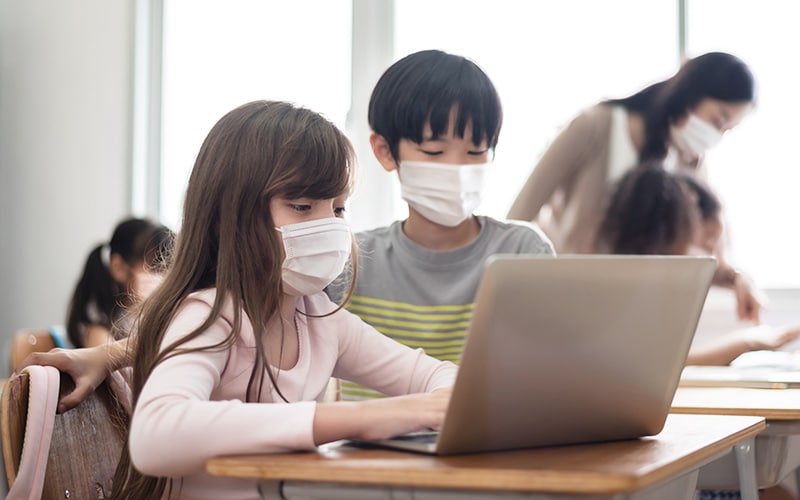August 16, 2021
Clare Morrison-Porter
Three Ways to Reverse the Pandemic Slide in the Year Ahead
4 minutes
Children across most school districts experienced some level of regression over the last year. The disruption to the education environment has made the need to deliver on unfinished learning an urgent priority over the summer and into the fall semester.
The drastic learning interruptions created by the pandemic did not hit students equally. Instead, the move online exposed inequalities in society, with the experience of learning from home largely dictated by access to a dedicated learning space, devices, and sufficient internet. McKinsey predicts that students will have lost between 3-14 months of learning compared to typical in-classroom teaching. This wide range shows just how much some students need to catch up, with the greatest impact in low-income, Black, and Hispanic communities.
As well as socioeconomic background, the pandemic had different impacts depending on age group. Younger students saw the most dramatic losses, with one commentator likening it to learning how to ride a bike—if you’re just getting started, you’ll experience a wider setback from time away from training than if you had already become a confident cyclist.
Because of the impact on mental health caused by the pandemic, the approach moving forward should be one led by a focus on entire well-being and not just academic results. This was highlighted in the comments shared by participants at our Education Leadership Summit, which displayed broad alignment for prioritizing mental health, empathy, and compassion in efforts to reverse the pandemic slide:
“Do not let yourself or your district be “judged” in the language of competence. Embrace “compassion” and vulnerability.”
“The journey will be challenging. Remember not to take things personally. Important to remember this so we can maintain our mental health and well-being, in order to support others.”
“Shifting the focus from “learning loss” to bridging gaps. A deficit focus never moves kids forward. It’s important to acknowledge what they’ve gained as well as lost.
Explore more results from the event’s Pandemic Slide Exchange.
Three ways to reverse the pandemic slide in the year ahead
Helping students to recover from the past year’s learning loss requires a multi-pronged approach. Intensive catch-up classes and tutoring are effective but expensive and should be layered with a broader focus on well being-focused student care:
Ease the transition back to in-person learning with a hybrid model
The pandemic forced us to be wary of every day, once ordinary activities and interactions. As a result, our Education Leadership Summit found that many school staff face conversations with parents who want learning to stay online for health and safety reasons. However, getting students back into classrooms for face-to-face learning is critical to delivering on unfinished learning.

A hybrid approach may help to alleviate some of these fears. There are multiple ways to implement this, and it affords the opportunity to reassure parents that interactions are kept to a minimum and there is more time for deep cleaning. In addition, eliminating the pressure of having all students at school at all times frees up space and time for in-person catch-up classes for critical early years, transition years, or students who are struggling academically.
Build a foundation that is flexible enough for further interventions
With research-based on qualitative interviews and empirical study analysis, Education Week recommends a strong academic foundation to your school’s plan when it comes to combating learning loss. The report’s authors suggested five areas of initial priority, which can be personalized and expanded as needed in your school. These are:
“Grade-level teaching for all students, a way to track each student’s whereabouts, a curriculum synched across schools and delivery methods (in-person and remote), plenty of uninterrupted teaching time, and schedules that benefit the students most likely to need additional help.”
Incorporate community voices into strategic recovery plans
Given the variety of learning experiences that students have had over the past year, implementing one catch-up plan across the board and holding everyone accountable to a rigid standard will be ineffective.
McCallen Independent School District in Texas used ThoughtExchange as part of its Champion Project to plan for the upcoming school year. This project brought together elementary, middle, and high school students plus parents, teachers, counselors, and principals to open discussion on the school’s challenges and opportunities.

The project has become a vehicle to push the community forward together. Now, the school leadership is focused on packaging the top-rated thoughts and comments into a strategy that will meet the unique needs of the school’s student body. Their strategy will include ramping up face-to-face instruction and closing performance gaps during the summer period.



